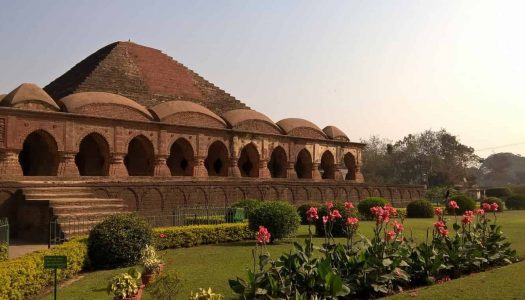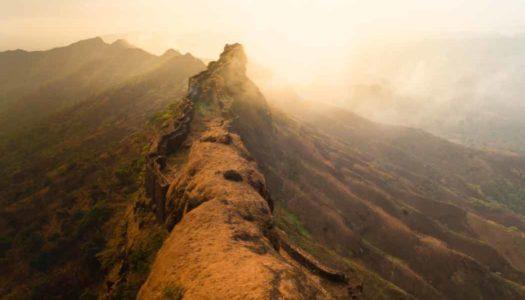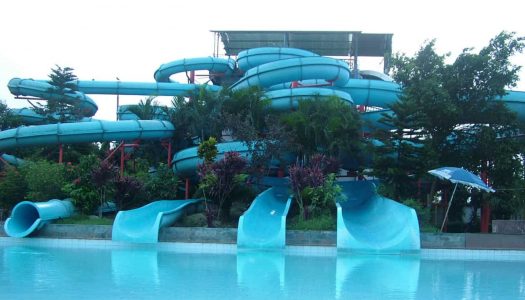Structures of beauty and grace are many! Victoria Memorial is, however, a monument of colonial legacy combined with Indian culture. Nestled in the heart of Kolkata, the Victoria Memorial is an awe-inspiring monument paying homage to Queen Victoria. It beautifully blends classical and Neoclassical architectural styles.
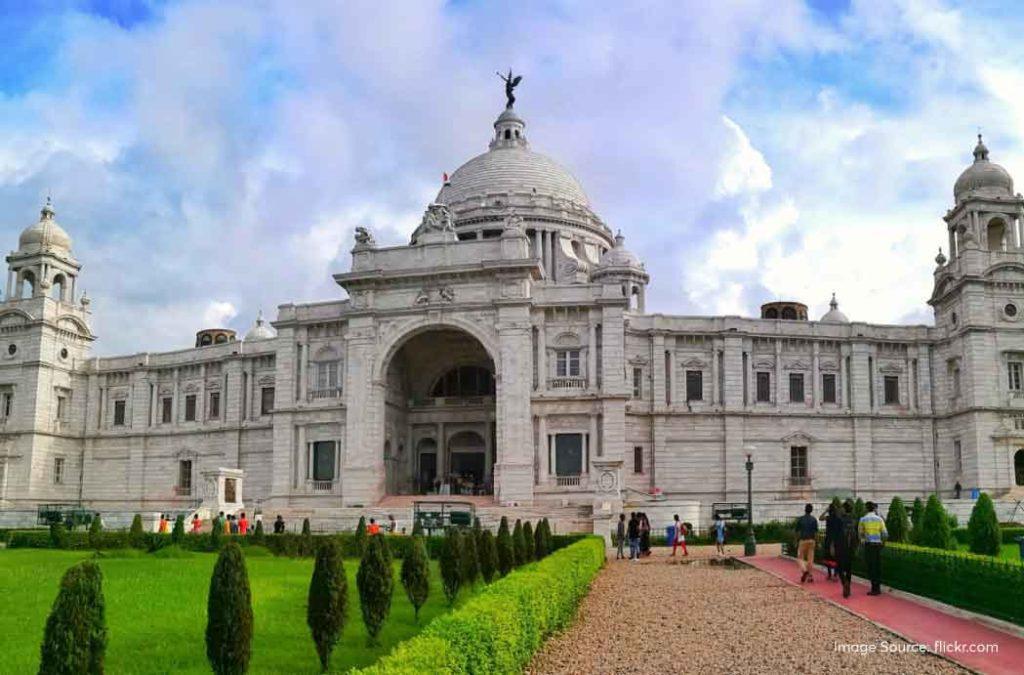
This cultural place houses a museum and 25 galleries showcasing Indian history during the British Raj. It also has gardens in the surrounding area with several statues. Planning a getaway already? Check out affordable hotels in Kolkata for a comfortable stay!
The Victoria Memorial was dedicated to Queen Victoria. It is believed that she was keen on the subject of India and their aspects. Lord Curzon put forward the idea of building a memorial to preserve the history and later, introduce a museum. A site was chosen, which in today’s time, is near to the Raj Bhavan. It is located in the Maidan and attracts thousands of tourists every year.
Location: Victoria Memorial Hall, 1, Queens Way, Maidan, Kolkata, West Bengal 700071
Book Budget Hotels in Kolkata
Design and inspiration of the Victoria Memorial
Indo-Saracenic revivalist architectural style is one the prime styles used during the British rule in India. It implies a fusion of various styles ranging from Mughal, Indian and European. That’s exactly why Victoria Memorial stands as a testament to excellent architecture and design. You can witness the columns throughout the structure. It is a European inspiration.
Similarly, domes are inspired by Mughal-style architecture including the Taj Mahal. Even the usage of white marble is significant in the Rajput styles. Walk through the interiors and you can find Indian inspirations in the form of decorative motifs and intricate patterns. The Islamic style floral design and geometric shapes are also a part of the interiors. It is the seamless integration of styles that makes it a must-visit destination.
What makes the Victoria Memorial a stunning historical monument is the use of white marble. It showcases elegance and grandeur as the colour stands out during the daytime too. This white marble was used as it was known for its lustre and purity. The usage of this marble is inspired by classical European architecture. It sure communicates vibes of elegance and luxury!
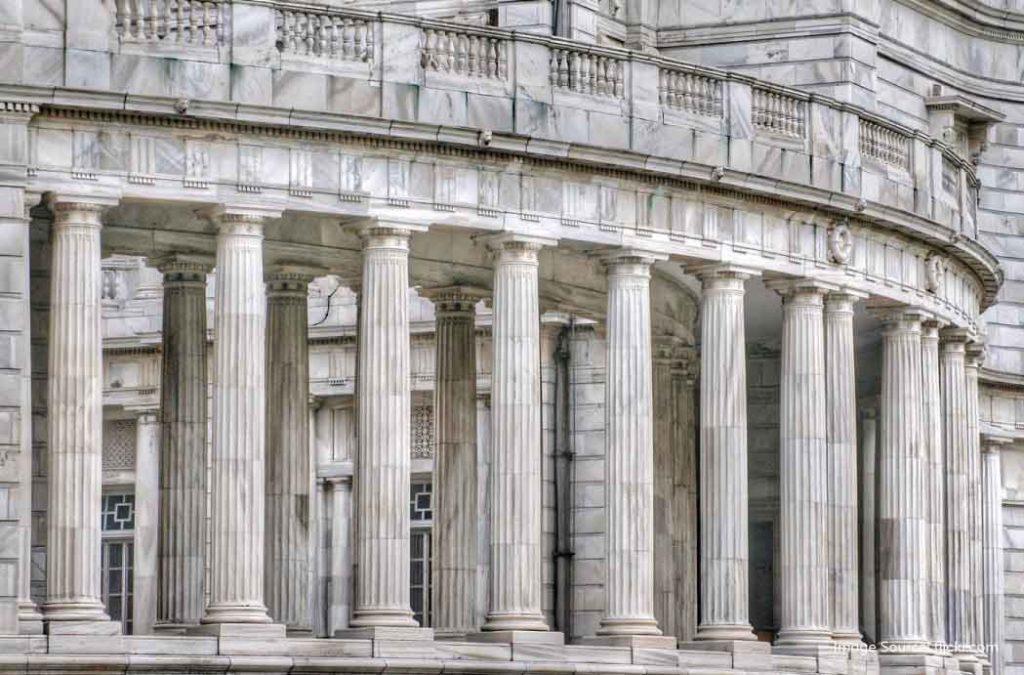
The central dome of the Victoria Memorial is one of the prominent attractions here. Adorned by the Angel of Victory (sculpture above it), the dome steals the show! It is 184 feet high and the idea was to create a monument slightly higher than the Taj Mahal. This is again a fusion of Mughal and Indo-Saracenic architectural styles.
Refer to the Gardens section to know more about the statues and their significance.
The Angel of Victory
As you watch the Victoria Memorial, you are sure to witness the Angel of Victory on the top of the central dome. Such a thoughtful creation speaks volumes about the ideation of this marvel. Designed by Sir Thomas Brock, the Angel of Victory is a statue of a winged female holding a bulge.
It symbolises victory. Interestingly, this was sculpted to showcase the victory of the British Raj in India. In today’s time, the structure plays an important role in reminding the times of colonialism. The central positioning also communicates the essence of British power and authority.
The history of Victoria Memorial
Lord Curzon is one of the important personalities in shaping the idea of the Victoria Memorial. It was his vision to create a historical impact by building a memorial hall for Queen Victoria. After the death of the queen, Lord Curzon presented the idea to the Secretary of State of India. Guess what? Government, politicians and the public loved the idea!
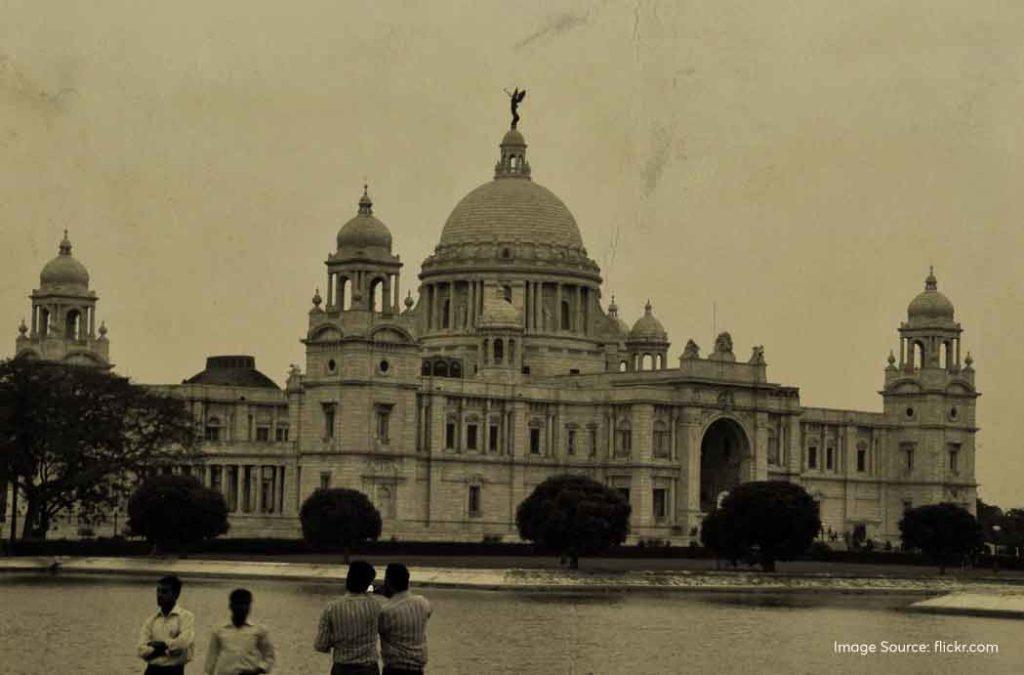
In fact, Curzon appealed for funds and everyone jointly contributed to the construction. It took approximately 1 crore and 5 lakh rupees for the process. Lord Curzon strongly wished to build a memorial and later introduce a museum inside it. He always wanted to display the history of India and present it to future generations. His vision was not only appreciated but also supported by people.
- 1901 – After the Queen’s death, the idea was proposed by Lord Curzon. Soon after approval, William Emerson was chosen as the architect.
- 1906 – The foundation stone was laid by the Prince of Wales.
- 1906 – Quickly after laying the foundation stone, the construction began and excavation started.
- 1906 to 1920 – Victoria Memorial faced various challenges regarding shortage of funds. The central dome and galleries were constructed during this time.
- 1920 to 1921 – Different artworks were installed. Various sculptures and other elements were ready to be placed.
- 1921 – Construction was completed and the memorial was made open to the public.
Post-independence, various restoration works had been planned by the government. Internal renovation was also considered by the government. In 2021, the lawn opposite the memorial was deeply cleaned. In 2023, the Prime Minister of India, Shri Narendra Modi, inaugurated a Biplobi Gallery. It was inaugurated on the Shaheed Diwas. The aim is to narrate the journey of Bhagat Singh, Rajguru and Sukhdev. Such a striking move ensures constant development and scope for growth in the heritage tourism sector.
Museum and galleries at Victoria Memorial
Victoria Memorial is known for its spectacular museum. It allows you to immerse in the historical vibe and grandeur of the palace. Moreover, it introduces you to different artists of that era. The museum has everything, from ancient manuscripts to coins and awe-inspiring paintings.
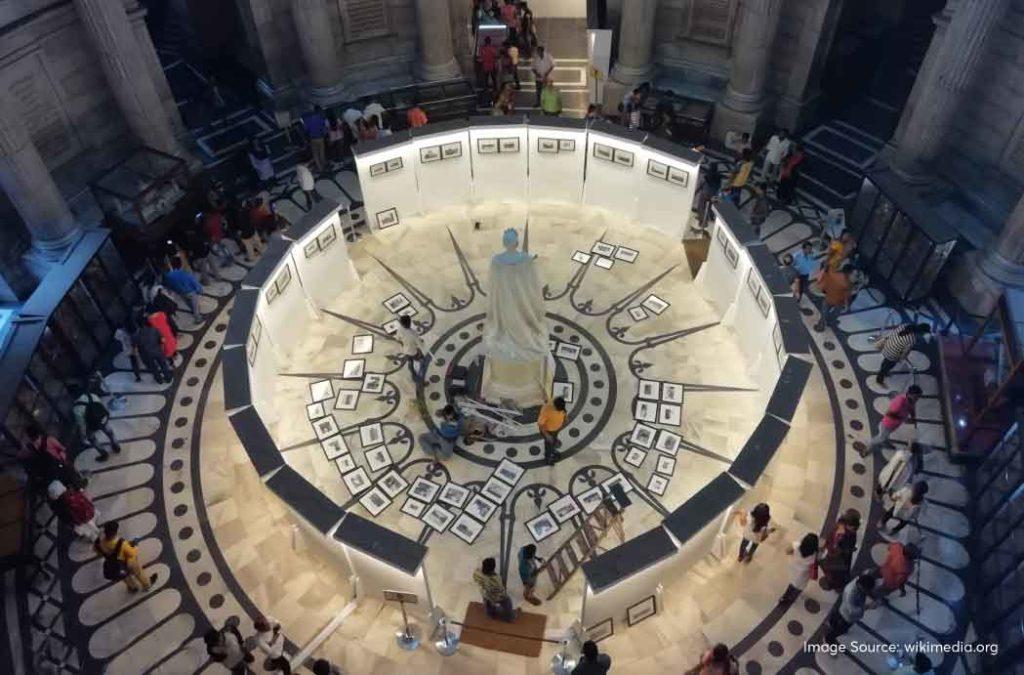
As you dive into history, the museum allows you to view the documents of the bygone era. These documents state about the treaties and official communications. That is certainly interesting! Move ahead and you can find a spectacular collection of coins. It was Lord Curzon’s wish to display important coins from the empires that ruled different places in India. That’s exactly why the museum has multiple coins with different writings.
British colonists involved in the construction and idea of the Victoria Memorial always wanted to document India. With sincere efforts, they collected visuals of different movements. You can surely find some of the rarest photographs here. There’s also a special section with a vast collection of rare books.
Arms and ammunition were a part of the Indian freedom struggle back then. Indians and the British equally used different types of weapons for wars and protection of the country. The museum has a dedicated section for the display of these arms. It was Lord Curzon’s wish to collect all unique weapons from different parts of India. You can observe swords, axes, spears and a lot more.
The museum also pays attention to creativity through a section for textiles. Traditional textile designs and fabrics can be found here. What’s more? Amazing miniatures steal the show. You can find miniatures of Tipu Sultan, Durbar of Akbar, Emperor Jehangir, Nawab Saja-ud Daula and many more.
Royal Gallery, Calcutta Gallery and National Leaders Gallery
As the name suggests, the Royal Gallery is all about Queen Victoria. It has some of the finest oil paintings allowing you to immerse in the life of the queen. Observe the magnificent painting of the Queen receiving the sacrament at her coronation. Another painting showcases her marriage with Prince Albert.
Even the marriage of the Prince of Wales is depicted through an artistic oil painting. There are two paintings of the queen in the first and second Jubilee service. What’s more? You can see a desk and chair in the same gallery! That is the one used by Queen Victoria at Windsor Castle. You can also find portraits of Edward VII as Prince of Wales.
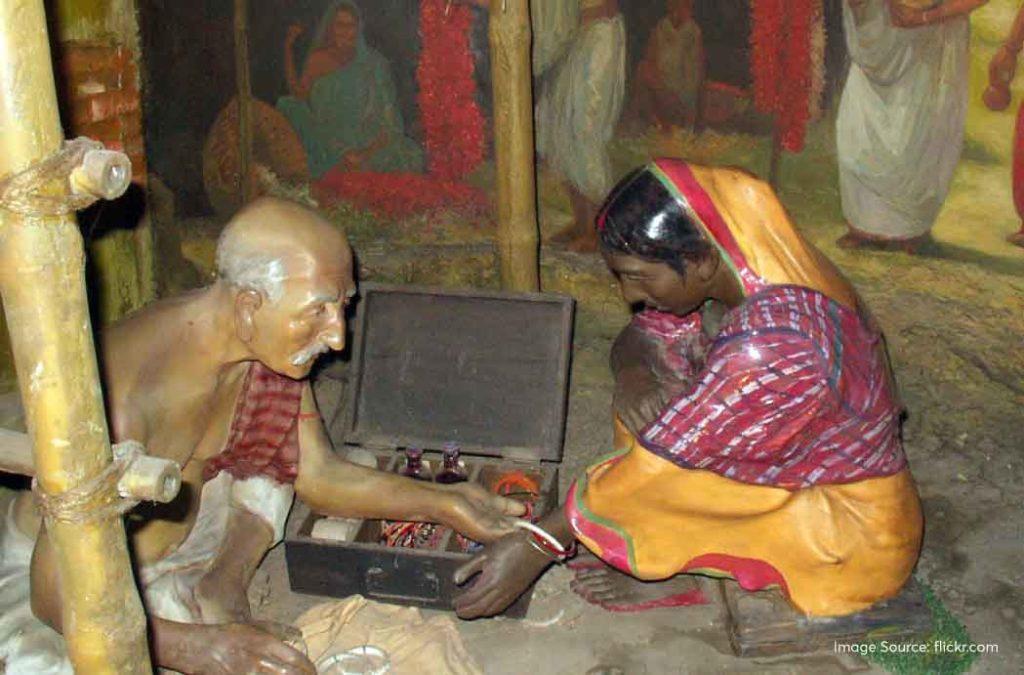
The Calcutta Gallery was an initial of Lord Curzon. He wanted to showcase Calcutta, now Kolkata, as a historically rich city. That’s when the idea of this gallery came into the picture. It has a fusion of paintings, exhibits, attractions and a lot more. All of it defines the lifestyle of the city. You can witness the development of the city and even the shift of capital from Calcutta to Delhi. It also has a life-size display of Chitpur Road which was the main business area back then.
Post Independence, a national leader’s gallery was added to the list of galleries. You can read information about the freedom struggle and also walk through the paintings. It includes photographs and important documents dating back to the freedom struggle era.
Paintings, Manuscripts and Memorabilia
You can find a diverse range of Western paintings in the memorial hall. Observe the renowned artistic expressions of Tilly Kettle and William Hodges. Paintings of Daniells are highly prized possessions of the memorial. Apart from Western art, it also houses paintings by Indian artists. Notice the colourful hues by Abanindranath Tagore, Nandalal Bose and Gaganendranath Tagore. Interestingly, one of the sections also had lithographs and aquatints before the camera was even a thing!
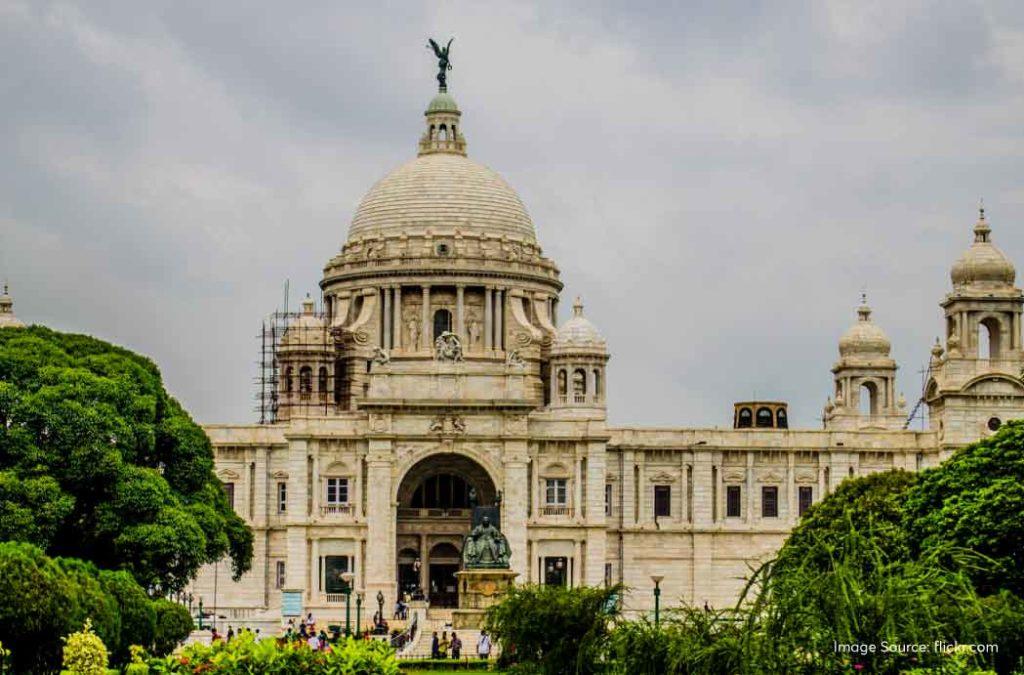
Did you know Victoria Memorial also has a dedicated section for manuscripts? You can witness the ancient texts ranging from historic plans to communications between the emperors. There are a plethora of manuscripts from various Buddhist and Sanskrit texts.
The gardens of Victoria Memorial
Designed by Redesdale and David Prain, the Gardens in the Victoria Memorial attracts thousands of visitors every year. After all, who doesn’t want to step into the lush green landscape? Adults and students enjoy a soothing walk here.

You can also spot enthusiastic joggers during the early morning. The garden is spread across 64 acres comprising various statues. One of the main attractions of the garden is the bronze statue of Victoria. The queen is seated on the throne depicting power and authority over the region.
Celebrating historical figures
The gardens are specifically known for their statues and historical significance. You can find multiple figures throughout the expansive area. Move to the quadrangle area and spot the statues of Hastings, 1st Marquess of Dalhousie, Arthur Wellesley, Charles Cornwallis, Robert Clive, James Broun-Ramsay and 1st Marquess Cornwallis.
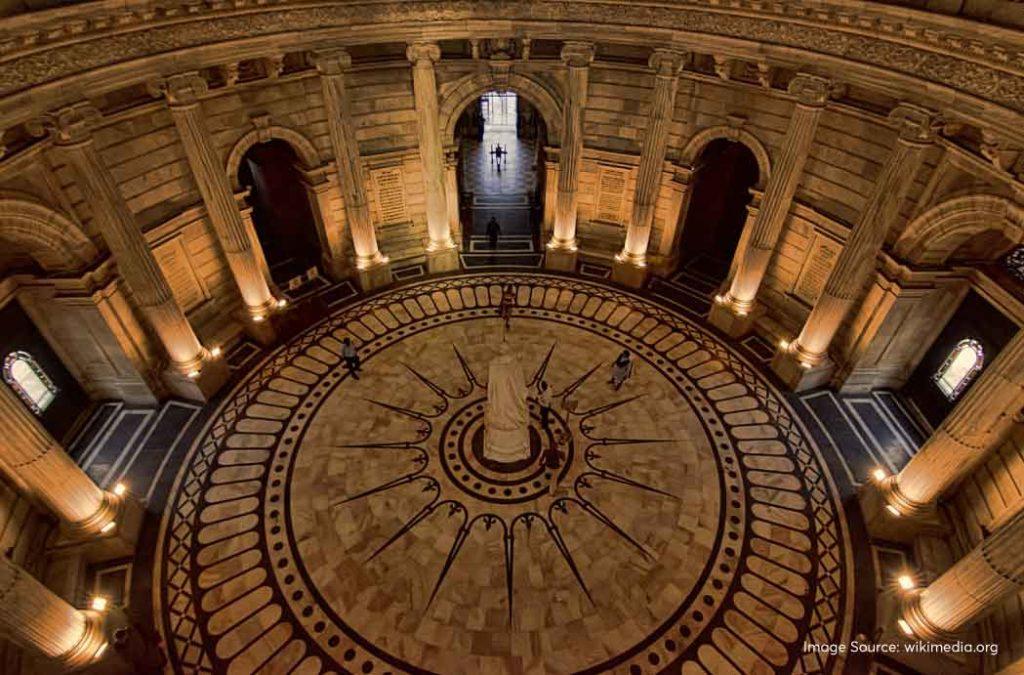
As you walk towards the south, you can spot the Edward VII memorial arch. Photography enthusiasts often flock to this area to capture the beauty of the construction. The arch houses a beautiful bronze statue of Edward VII and a marble statue of Lord Curzon.
Apart from these, you can also observe the statues of Lord William Bentinck, Rajendra Nath Mookerjee and George Robinson.
Timings and entry fees for museum and gardens
| Timings | Days | Entry Fee | |
| Victoria Memorial | 10:00 AM to 6:00 PM | Tuesday to Sunday | INR 50 for Indian Citizens INR 100 to INR 500 for foreign citizens (depending on the country) |
| The Gardens | 5:30 AM to 6:00 PM | All Days | INR 30 Per Person |
Light and sound show
Popularly known as the Projection Mapping Show, Victoria Memorial attracts various tourists for this program. You must arrive at least 1 hour before the event to book tickets and get your desired seats.
- The time for the show is fixed at 6:30 PM.
- The cost for the show is INR 50 Per person; it is free for children below the age of 3.
- The show is available in three languages – English, Hindi and Bengali. The schedule for the same is mentioned below.
| Language | Days |
| Bengali | Tuesday | Friday | Sunday |
| Hindi | Thursday | Saturday |
| English | Wednesday |
- It is important to respect the heritage property and not litter anywhere.
- Photography is prohibited in certain areas so be respectful towards the decision.
- Smoking and outside eatables are not allowed inside the memorial.
- Arrive early during the visiting hours as you may have to wait in the queue to procure tickets.
Role in preserving Indian and British heritage
Victoria Memorial stands as an iconic landmark defining the Indian and British heritage. It is because this structure is inspired by Indians and the British. In today’s time, individuals get an opportunity to witness the shared culture and ideology of the two nations. As it preserves the memory of Queen Victoria, it allows you to reflect on the social, economic and political aspects of the British Raj.
Expansive galleries and exhibits are again a fusion of British and Indians. From costumes to weapons, a lot of talks about the cultural diversity of the two nations. While you learn about British rule, the presence of ancient manuscripts and Indian paintings elevate its splendour. Additionally, the architectural style clearly talks about the amalgamation of various styles from Mughal to Indo-Saracenic. The Victoria Memorial is a testament to India’s legacy and its colonial past.
Victoria Memorial is constantly developing to involve the public in knowledge events. The place is open to students from all over the country for exploration. Many schools and educational institutions are welcome for an educational trip too!
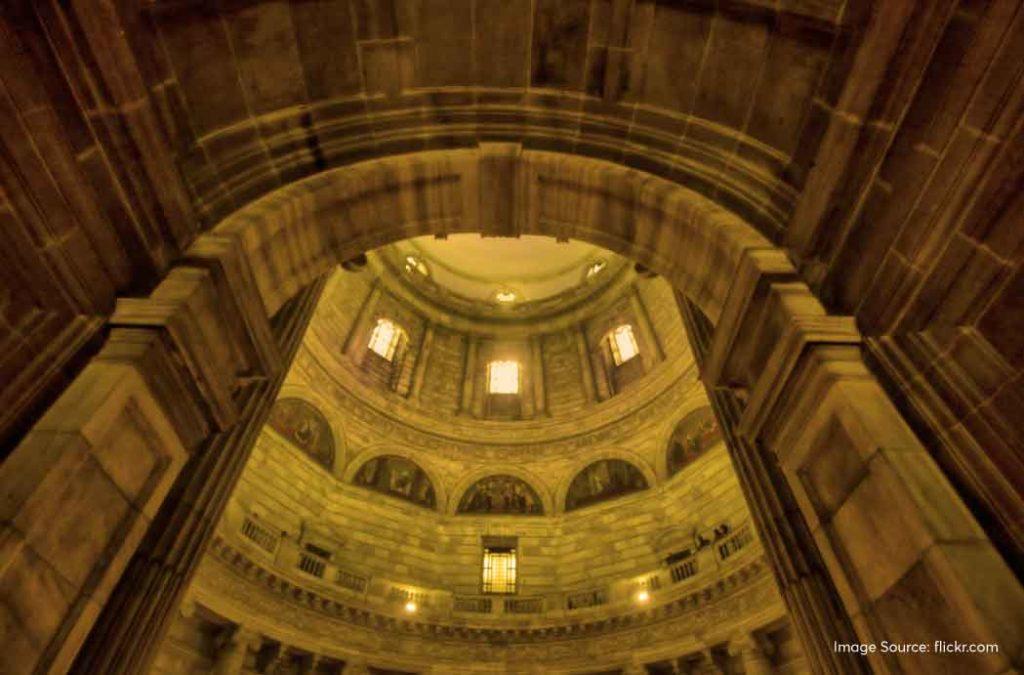
Apart from this, Victoria Memorial organises various public events for sharing knowledge. Even the newsletters are used as a form of communication about the major updates, developments and future plans. The place also has an activity club responsible for engaging the youth in learning capabilities.
What’s more? Victoria Memorial organises various interesting events, workshops and activities for public engagement. These events include music, drama, cultural heritage and engaging discussions. It is one of the most active monuments in India attracting not only tourists but also creators, artists and young enthusiasts.
Conclusion
Nestled in the heart of Kolkata, Victoria Memorial offers a soothing combination of art, history and culture. The scenic galleries take you through artistic paintings. Expose yourself to the world of colours. What’s more? The museum lets you dive into the history of India and its vital movements.
Weapons, manuscripts and textiles showcase the rich Indian history. Similarly, the fusion of architectural styles, depiction of Queen Victoria’s life, and display of India’s freedom struggle, all communicate a cultural influence transcending borders. Victoria Memorial is a beacon of cultural richness and historical inspiration for generations to come.
A must-visit destination for tourists and locals alike
When in Kolkata, you cannot miss visiting the popular Victoria Memorial! It is one of the marvellous creations showcasing the cultural heritage of Indians and British. From witnessing the grand domes to massive galleries, you are sure to learn about history and the city’s development. The memorial provides an amazing opportunity to learn about architecture, paintings, ancient manuscripts and so much more!
With such an affordable entry fee, you can literally know about the colonial past and its effects. The cultural experience exposes you to unique traditions and artistic expressions here. Whether you are a student or an adult, exploring the opulent Victoria Memorial opens your mind to timeless knowledge and abundant observations.





















